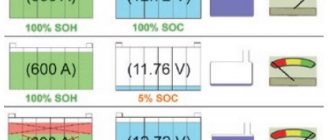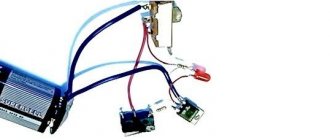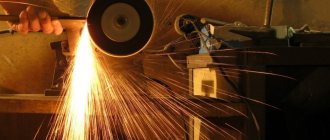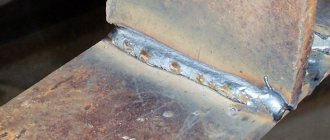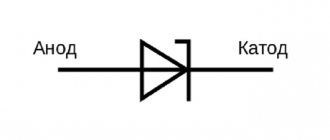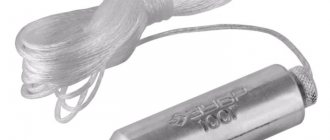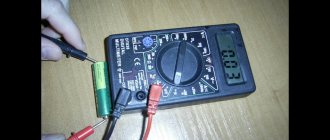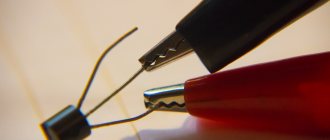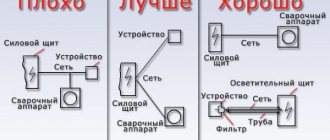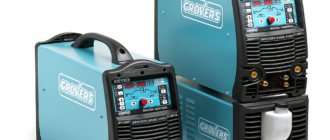Vacuuming of welds
The installation is designed for vacuum testing of the tightness of welded joints and base materials in the oil and gas, energy and other industries. The main types of controlled objects are tanks, boilers, steel and plastic pipelines, fuel tanks, linings and other objects with one-way access. The tightness control unit with a set of vacuum frames is included in the technical equipment list of Transneft PJSC and is approved for use at nuclear industry facilities. Tightness control using the installation is based on the bubble method regulated by PNAE G-7-019-89 and comes down to the following steps:
- Application of a foam-film indicator to the controlled surface;
- Installing a vacuum frame on the controlled surface and creating a vacuum between them;
- Visual control of the flow of bubbles in places where leaks occur.
Features of control using a vacuum installation:
- Conducting inspection without prior preparation of the surface to be inspected;
- Possibility of replacing frames to control products of various shapes;
- Possibility of control immediately after welding;
- Conducting control with one-way access without supplying test pressure;
Scope of delivery:
- vacuum pump made in Russia: NVM-5 (220 V, 1.4 l/s, 9 kg) or vacuum pump made in Italy: SC.8 (220 V, 2.5 l/s, 8 kg);
- vacuum hose - 13 m;
- foam-film indicator – PPI-1;
- installation passport
Depending on the type of surface being monitored, the installation can be additionally equipped with standard vacuum frames or frames made to customer specifications. For a one-time need to use the installation, a leak testing service can be ordered in our NDT laboratory. The work is carried out by certified specialists and a conclusion is issued.
Standard dimensions of vacuum frames are given in the table
| Frame shape | Window dimensions, mm | Photo | Purpose |
| Vacuum frame for tightness control flat | 620x80 | Inspection of butt welds and flat surfaces | |
| Frame for tightness testing, flat-overlapping | 602x62x8 | Control of overlap seams and surfaces with a height difference of 6-10mm | |
| Vacuum corner frame | 530x75 | Inspection of corner (morning) and T-welds | |
| Vacuum corner frame (external) | by application | Inspection of external fillet (morning) welds | |
| Triangular vacuum frame | 195x195x195 | Control of internal welded corners formed by three planes | |
| Vacuum chamber round | Ø 240 | For inspection of flat, convex and concave surfaces | |
| Vacuum chamber rectangular | 230x230 | For inspection of flat surfaces | |
| Vacuum frame for pipes with diameters from 73.6mm to 1220.0mm | Depends on diameter | Pipeline leak testing | |
| Vacuum frame for tightness control, cylindrical | Ø 100 | For external inspection of triangular angles |
Technical characteristics of the vacuum leak detector:
- supply voltage: 220V;
- pump performance: 1.4 l/s;
- maximum vacuum in the frame: -0.07 MPa;
- time to reach maximum vacuum in the frame (in the absence of suction through the seals): no more than 10 s;
- ambient temperature: from -10 to +35 0 C;
- vacuum pump weight: no more than 9 kg
- pump continuous operation time up to 24 hours
Vacuum frames for tightness control
Subscribe to our You Tube
Vacuum unit V-DECT for leak testing
- Description
- Additional materials
- How to buy?
- Delivery
- Payment
The V-DECT vacuum installation is designed to control tightness using the vacuum (bubble) method and allows you to detect defects that appear on the surface of metals: cracks, cavities, lack of fusion, pores and other discontinuities of the surface and heat-affected zone.
Purpose of the V-DECT vacuum machine
The vacuum (bubble) method of leak testing is based on detecting leakage points of test gas or liquid in a closed volume of a vacuum chamber (frame) that has sealed contact with the surface of the controlled object. Defects are detected by the formation and increase in the size of bubbles of the foaming solution at the locations of discontinuities. The size of the defect can be judged by the rate of increase in the size of the bubbles.
The V-Dect vacuum leak testing system has found wide application in various industries and is used for testing tanks, steel and plastic pipelines, welded vessels, boilers, cylinders, etc.
The V-Dect vacuum seal testing machine allows
- Monitor the tightness of welds (check welded joints and structures with one-way access);
- Control products of various shapes thanks to the use of several types of frames
- Carry out control directly during welding, without waiting for the entire structure to be completed;
- Perform inspection without preliminary surface preparation
Distinctive features of the V-DECT vacuum chamber
- Extended hose length - 25m for increased access distance
- Powerful, reliable 190 W two-stage vacuum pump
- Spacious, environmentally resistant, two-layer bag for components
- Reliable, high-strength vacuum train
- Convenient pockets for documents and consumables with zippers and Velcro
Features of control using a V-DECT vacuum chamber
- Possibility of detecting defects with one-way access to an object
- Carrying out control in intrinsically safe mode at a distance of 25m
- Ease of inspection at heights and hard-to-reach places
- Use of frames of various shapes without changing the installation
- Possibility of testing without preliminary preparation of the test surface
Main technical characteristics of the V-DECT vacuum unit
- power supply: 220V/50Hz;
- pump performance: 1.2 l/s;
- pump motor power: 190 W;
- maximum vacuum in the frame: -0.08 MPa;
- operating temperature: from -20 to +35 0С;
- vacuum unit weight: 25 kg
- time to reach maximum vacuum in the frame: no more than 7-10s
Basic delivery set for V-DECT vacuum chamber
- vacuum pump - 1 piece;
- frame structure on wheels - 1 piece
- vacuum hose - 25 m - 1 piece;
- vacuum gauge - 1 piece;
- flat frame for butt joints 120x500 mm
- corner frame 75x75x275 mm
- vacuum oil 1 bottle.
- case for vacuum chambers
- installation passport with V-DECT operating instructions
- vacuum gauge passport with verification
If it is necessary to control non-standard surfaces (overlaps, etc.), the V-DECT vacuum unit can be additionally equipped with standard vacuum frames or frames made to customer specifications.
No files uploaded
During the working day, you will be issued an invoice for payment, which will indicate the name of the product, price, quantity and time of shipment to your address.
In your application you must indicate the name and quantity of the product you need, as well as the details of the payer’s organization.
In the exhibition hall you can get acquainted with the equipment we offer, and technical specialists will help you choose the right products.
We have the ability to deliver goods to any point in Russia using the transport company or courier service of interest:
The goods can be delivered either to the transport company’s terminal or directly to the door.
The cost of delivery is calculated by our company’s logistics service specialists in the shortest possible time to the required location at the customer’s request.
You can clarify the conditions and cost of delivery by contacting the specialists of our company.
Relations with legal entities are regulated by an agreement, an invoice for payment, a consignment note, an invoice (UPD) and a non-cash transfer of funds from the Buyer’s bank to the Seller’s bank account.
An individual can also make a payment to our bank account by bank transfer or cash. Upon receipt of the goods, a package of documents is transferred: the original invoice for payment for the products, the delivery note and the invoice (UPD).
Vacuum bubble testing of metal structures
The non-destructive testing laboratory of the Olimp IC carries out vacuum-bubble testing of welds, heat-affected zones, and base metal. The service is provided in Moscow and throughout Russia.
NDT specialists can visit the site the next day after receiving the application. Tests and measurements are carried out by employees certified to qualification levels II and III.
Rostechnadzor and other regulatory agencies trust the conclusions on the compliance of the inspection object with the requirements of technical documentation issued by LNK.
The laboratory is certified to carry out vacuum-bubble testing of the following objects:
- building structures;
- pipelines;
- equipment for hazardous industries;
- boiler inspection facilities;
- gas supply systems;
- oil and gas industry equipment;
- lifting structures.
Vacuuming
The main and only purpose of the vacuum-bubble method is to detect through defects that affect both the current performance of equipment, for example, maintaining tightness, and its future operation. The presence of defects can cause gradual corrosion of objects, a decrease in their strength and electrical conductivity, as well as emergency situations, leaks of chemicals, and so on. Leak detection is widely used in monitoring welds on tank bottoms. When testing using this method, a vacuum chamber is installed on the side of the welded joint being tested, moistened with a foam indicator solution, in which the air becomes rarefied and, thanks to the resulting pressure difference, atmospheric air penetrates through the through defects, forming bubbles. Control is carried out at ambient temperatures from +8ºС to +40ºС and relative humidity no more than 80%.
The procedure for performing the vacuum-bubble method:
- Remove metal splashes, rust and other contaminants from the surface. It is not allowed to apply paint and varnish coatings before inspection;
- Apply a foaming film composition (FPS) to the controlled surface;
- Place a vacuum chamber on top of the PPS and press tightly;
- Create a vacuum in the vacuum chamber of at least 0.08 MPa;
- Allow exposure for at least 20 seconds;
- Inspect the control area located under the frame for indications (foam bubble). If there are indications, mark them next to the vacuum chamber. To do this, it is necessary to visually draw a perpendicular line from the defect relative to the weld. After removing the camera, the markings are transferred to the weld;
- Unload the vacuum system.
The installation for monitoring should include: a fore-vacuum pump, a vacuum receiver, one or a set of vacuum chambers with three-way valves, vacuum gauges and lighting fixtures, hoses.
The vacuum-bubble method can be used at boiler inspection facilities, gas supply systems, equipment in the oil and gas industry, equipment in fire-explosion and chemically hazardous industries.
The OLIMP IC laboratory offers you high-quality work on vacuum-bubble testing by competent specialists.
The purpose of non-destructive testing using the vacuum-bubble method:
- Establish compliance of the survey object with the requirements of regulatory and technical documentation.
- Give a qualitative and quantitative assessment of surface/subsurface defects, determining the degree of their potential danger.
- To increase the level of safety of equipment operation at industrial facilities classified as particularly hazardous.
- Ensure the safe operation of critical pipelines and prevent possible accidents.
- Timely identify unacceptable structural defects at various stages of construction of buildings and structures.
Mobile laboratory of non-destructive testing "SK "OLIMP" is:
- Guaranteed accuracy of results.
- A complete set of verified equipment, certified materials, calibrated control samples necessary to perform all measurements and tests using non-destructive testing methods using ultrasound within the scope of the laboratory certification. Measuring instruments are included in the state register.
- Years of experience in solving non-standard non-destructive testing problems.
- Competent personnel - employees are certified for qualification levels II and III, NDT specialists have more than 10 years of experience.
- An extensive base of regular customers, each of whom is given a discount the next time they contact or order other services of the company.
We have all the permitting documentation in our possession
Get advice from a laboratory technician or submit an application for vacuum-bubble testing.
- Send a message to e-mail: [email protected]
- Call phone numbers 8, 8 (800) 707-72-31 or request a call back.
Vacuuming
The main and only purpose of the vacuum-bubble method is to detect through defects that affect both the current performance of equipment, for example, maintaining tightness, and its future operation. The presence of defects can cause gradual corrosion of objects, a decrease in their strength and electrical conductivity, as well as emergency situations, leaks of chemicals, and so on. Leak detection is widely used in monitoring welds on tank bottoms. When testing using this method, a vacuum chamber is installed on the side of the welded joint being tested, moistened with a foam indicator solution, in which the air becomes rarefied and, thanks to the resulting pressure difference, atmospheric air penetrates through the through defects, forming bubbles. Control is carried out at ambient temperatures from +8ºС to +40ºС and relative humidity no more than 80%.
Penetrant control
Non-destructive testing, including the capillary method, is an effective, and in some cases the only possible means of preventing emergency situations in high-risk facilities. The task of scientists, design engineers, and process engineers is to develop equipment and testing technology that would enable the flaw detector to identify only serviceable parts and not miss defective ones.
A flaw detector is the last resort that can prevent an accident, failure, or unexpected stop of a machine or mechanism. Particular responsibility lies with flaw detectors who control parts of aviation and space equipment, locomotives and carriages; equipment for nuclear, energy and chemical production, which pose a huge danger not only to humans, but also to the environment.
All over the world, non-destructive quality control and technical diagnostics is a whole industry, an integral part of the production and operation of all technical devices: hundreds of thousands of specialists every day ensure the rejection of low-quality parts during production (quality) and the timely detection of dangerous cracks on working technical devices (diagnostics), before everything dangerous to life, human health and the environment (safety).
The level of development of the advanced countries of the world at the present stage is characterized not so much by the high volume of production and range of products, but by indicators of quality, reliability and safety.
In highly developed countries, quality control costs average 1–3% of the cost of manufactured products, and in industries such as defense, nuclear, and aerospace, quality control costs increase to 12–18%. Labor costs for monitoring welded joints in the construction of large-diameter and long-distance pipelines reach 10%. The whole world has long understood that savings on control are imaginary savings, which ultimately result in huge costs for overcoming the consequences of accidents and disasters.
At the manufacturing stage, objective information is needed about the properties of the part, which makes it possible to judge the quality of the part, its suitability for work and the competitiveness of the product as a whole.
The use of non-destructive testing means during operation makes it possible to diagnose the technical condition of an object, determine its residual life, and the terms of further safe operation. Diagnostics is especially relevant for such potentially dangerous technical objects as equipment of main oil and gas pipelines, chemical and oil refining plants, pressure vessels, lifting and transport devices, etc., especially if we take into account that many of them have already exhausted their service life.
Judgment about performance and quality is achieved through identifying using non-destructive testing and technical diagnostics devices:
- surface and internal defects in the continuity of material, parts and structural elements (cracks, cavities, pores, delaminations, etc.);
- unacceptable changes in the structure of the material and physical and mechanical properties (grain size, density, elastic and strength characteristics, hardness, internal stresses, humidity, etc.);
- deviations of geometric parameters (thicknesses of coatings, surface-hardened layers, wall thicknesses of parts and structural elements, etc.);
- internal structure of objects (introscopy).
Leak detection using bubble vacuum method (vacuum) (PVT)
Penetrant control (PVC)
6.2.9.1 PVC is carried out to identify surface defects in welded joints and base metal of tank structural elements.
Flaw detection materials are used in the form of sets in aerosol packages according to the instructions for use. Kits should include:
- indicator penetrant, the characteristic color tone of which can be observed in visible radiation;
— cleaner of the test object from penetrant;
— developer of an indicator trace of a defect.
Compatibility of materials in sets is required. The compositions of the kit must not cause corrosion.
6.2.9.2 PVK is carried out in accordance with GOST 18442 (IV sensitivity class), instructions for the use of flaw detection materials and includes:
a) applying an indicator penetrant to the test surface, which includes the weld and the base metal at a distance greater than the thickness of the test elements on both sides of the seam. The penetrant is not allowed to dry on the surface;
b) removal of indicator penetrant;
c) application and drying of the developer. Drips and leaks of developer are not allowed. Drying of the developer should be carried out by natural evaporation or by blowing with heated air at a temperature of plus (60±10) °C;
d) inspection of the controlled surface is carried out 20 minutes after the developer has dried under illumination of at least 350 Lux. When inspecting the controlled surface, magnifying glasses from 2 x to 7 x magnification are used. If an indicator trace is detected, the identified defect is assessed using VIC. To do this, the area with the mark is marked and the surface to be inspected is cleaned of flaw detection materials. VIC is carried out using magnifying glasses and optical measuring instruments with tenfold or more magnification;
e) the scope of control of pontoons made of aluminum alloys is determined based on the results of the visual inspection, and all areas of the pontoon (seams and base metal) on the outer surface of which the presence of oil is detected must be inspected;
f) the results of the PVK are formalized in accordance with Appendix E.
6.2.10.1 PVT is used to detect through damage (tightness violations) of welded joints of tank structural elements in accordance with GOST 3242.
To carry out leak detection of PVT, vacuum chambers must be used that ensure the creation of a vacuum of at least 0.08 MPa.
6.2.10.2 When carrying out HTP, a vacuum must be created in the chamber for welded joints with the thickness of the elements being connected:
- no more than 4 mm - no less than 0.067 MPa;
- more than 4 mm - not less than 0.08 MPa.
6.2.10.3 Control is carried out in accordance with the operating instructions for the vacuum chamber.
6.2.10.4 During leak detection, foam indicators must be used to ensure leak detection at the evacuation temperature.
6.2.10.5 A leak is determined by the appearance of foam indicator bubbles.
6.2.10.6 HTP is not carried out through a particularly reinforced coating. HTP on damaged coatings of all types that do not meet the requirements of RD-23.020.00-KTN-184-10 is carried out after removing the remaining coating and stripping the structures to metal.
HTP through normal and/or reinforced coatings is carried out according to the results of the VIC.
6.2.10.7 The results of the HTP are drawn up in accordance with Appendix Y. The HTP report is accompanied by sketches of the tank structures indicating the coordinates of the location of the identified through damage (tightness violations).
Date added: 2015-06-04; ; Copyright infringement?
Your opinion is important to us! Was the published material useful? Yes | No
